Key takeaways
- Community life coaching emphasizes individual growth while fostering connections and positive changes in local neighborhoods.
- Schools play a critical role in environmental education, acting as hubs that inspire lifelong stewardship and responsibility among students.
- Interactive and hands-on approaches in workshops increase student engagement and emotional connections to environmental issues, making learning impactful.
- Measuring the impact of school programs involves tracking observable goals and recognizing when student awareness translates into action and community involvement.

What Is Community Life Coaching
Community life coaching, to me, is about helping individuals find clarity and purpose within their own neighborhoods. It goes beyond traditional coaching by focusing not just on personal goals but on fostering connections and positive change in the broader community. Have you ever felt that unique spark when you contribute to something bigger than yourself? That’s the essence of what these coaches strive to inspire.
In my experience, community life coaching blends empathy with actionable steps, guiding people to recognize their strengths and how those strengths can improve their surroundings. It’s rewarding to see someone realize that small, consistent efforts—like organizing local clean-ups or raising environmental awareness—can ripple outward, creating meaningful impact. Isn’t it wonderful when personal growth and community progress walk hand in hand?
What I find most powerful is the emotional connection that community life coaching nurtures. It’s not just about checking off goals; it’s about feeling part of a shared journey and understanding how individual actions tie into the greater good. This perspective shifts the way we see ourselves and others, making community feel less like a place and more like a living, breathing support system.
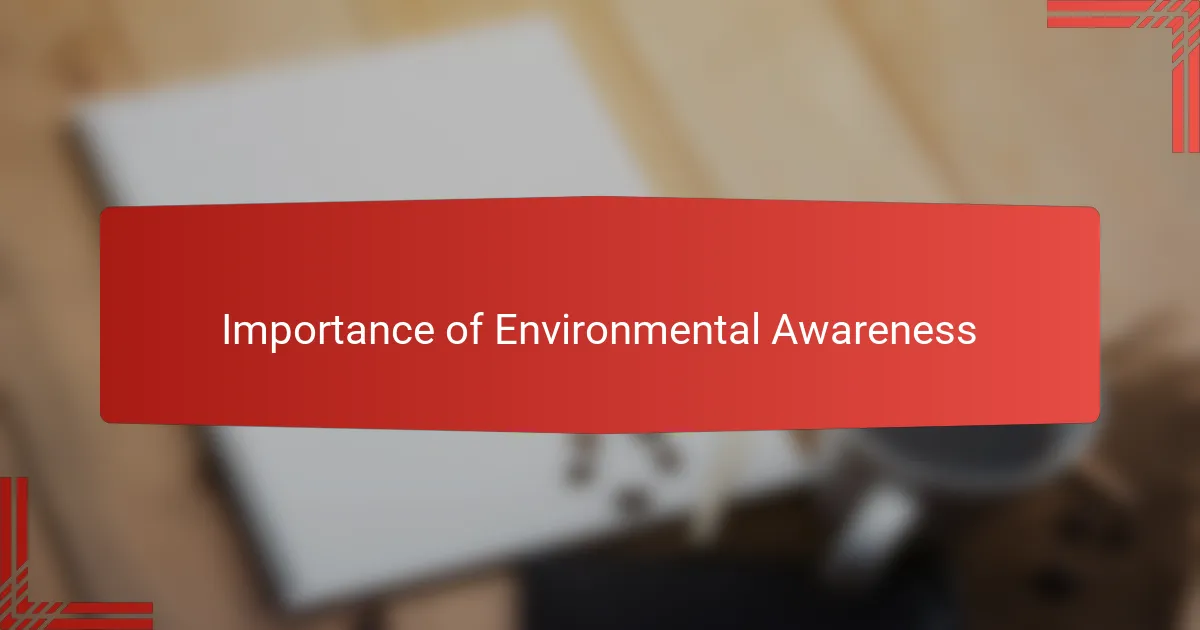
Importance of Environmental Awareness
Environmental awareness isn’t just a buzzword to me—it’s the foundation for how we live responsibly on this planet. When I first started talking to kids about the environment, I saw their eyes light up as they realized their actions actually matter. Have you ever wondered why some people seem indifferent to pollution or waste? Often, it’s because they haven’t been shown the true impact of their choices.
Understanding our environment helps build a sense of stewardship that goes beyond textbooks. I remember one classroom where a simple discussion about water conservation turned into a week-long project, with students eagerly sharing tips at home. That enthusiasm reminded me how awareness can spark lasting habits, making the environment’s health a shared priority rather than a distant issue.
Without this awareness, it’s easy to overlook the small daily actions that accumulate into significant harm. Do we realize how much plastic ends up in our local beaches or how urban green spaces affect our wellbeing? By promoting these conversations in schools, I see firsthand that environmental awareness plants seeds of care and responsibility that grow well into adulthood.

Role of Schools in Environment Education
Schools hold a unique place in shaping how young minds perceive the world around them. From my experience, they aren’t just settings for learning facts—they’re incubators for values and habits that last a lifetime. Have you noticed how a lesson about recycling can suddenly turn into a playground discussion about protecting wildlife? That’s the subtle but powerful role schools play.
When I work with local schools, I see teachers acting as both educators and role models, which makes environmental lessons feel real and urgent. There’s something inspiring about watching children connect classroom knowledge with real-world action, like starting a garden or organizing a waste audit. Don’t you think learning becomes far more meaningful when it’s linked to something tangible?
What often moves me is the ripple effect that starts in these classrooms. Kids bring home ideas, question routines, and sometimes nudge their families toward greener choices. It’s proof that schools aren’t just knowledge factories—they’re community hubs that can ignite a lifelong commitment to caring for our planet. How could we ask for a better foundation than that?
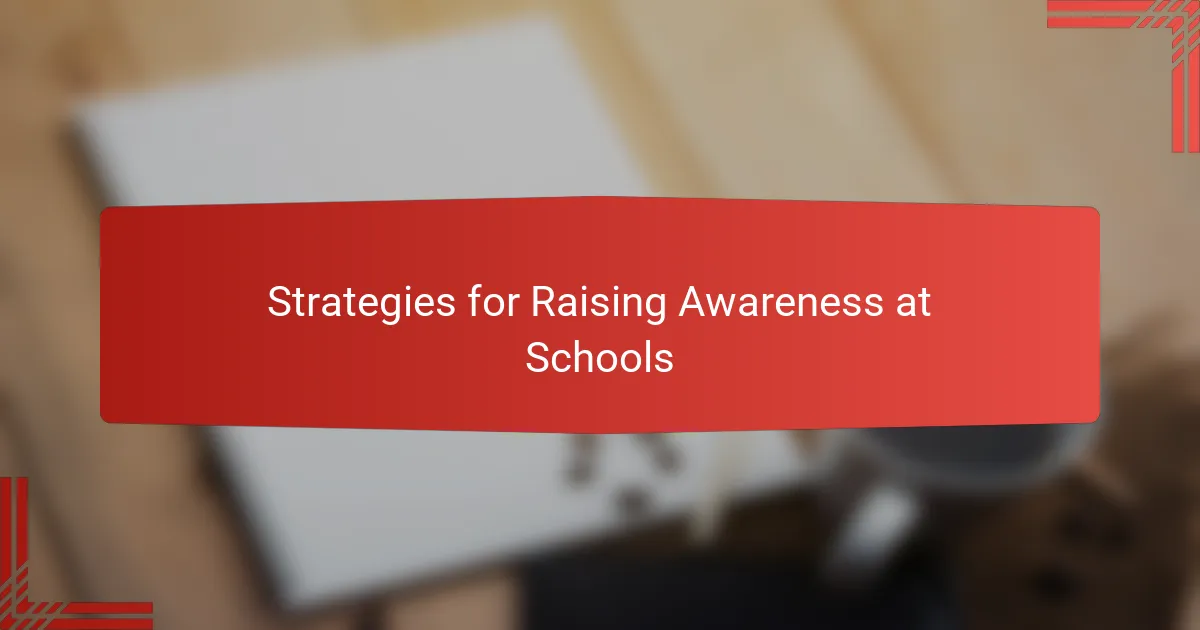
Strategies for Raising Awareness at Schools
One strategy I’ve found effective is creating interactive workshops that engage students directly in environmental issues. When kids get their hands dirty planting native species or sorting recyclables, their curiosity transforms into genuine concern. Have you ever noticed how a hands-on experience sticks with you far longer than a lecture ever could?
Another approach involves collaborating with teachers to integrate environmental topics into various subjects. For example, math classes can explore data on local pollution levels, turning numbers into real-world stories. It’s amazing to witness how this cross-curricular method helps students see the environment as a living issue, not just abstract facts.
Lastly, I make it a point to celebrate small wins with the students—whether that’s reducing classroom waste or starting a compost bin. These moments of achievement foster pride and a sense of shared purpose. Doesn’t it feel powerful when a group effort leads to tangible change? Those celebrations often spark motivation that lasts well beyond the school walls.
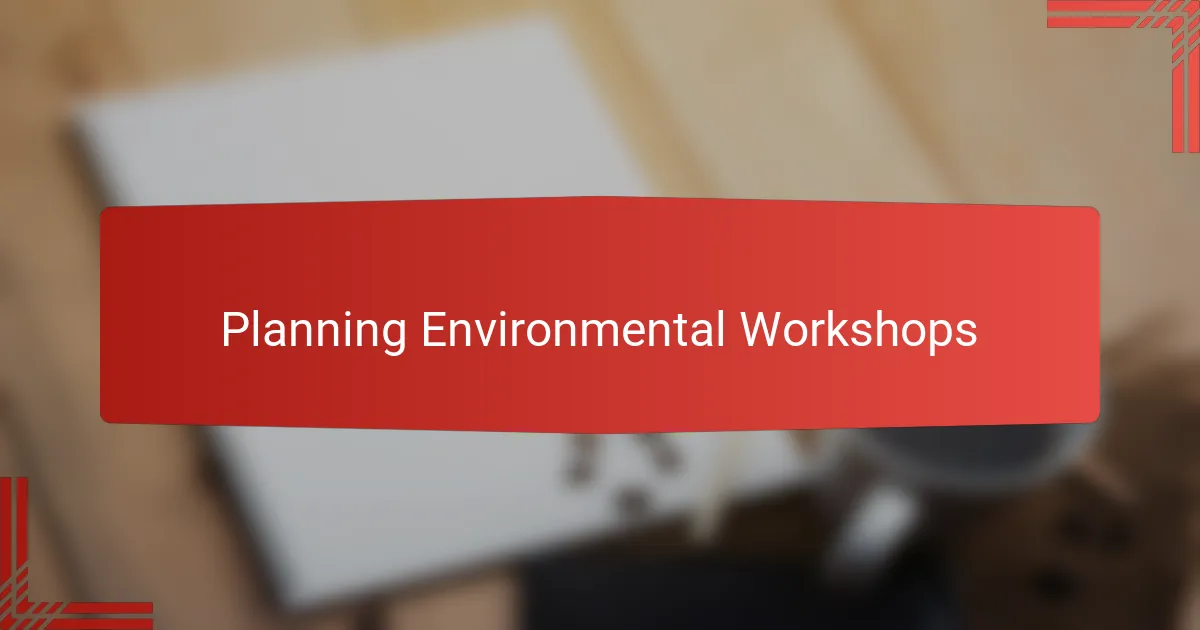
Planning Environmental Workshops
Planning environmental workshops means thinking carefully about how to make complex issues relatable and inspiring for young minds. I usually start by identifying themes that connect with the kids’ everyday lives—like water use or local wildlife—and then build activities that invite participation rather than passive listening. After all, when was the last time you truly learned something by just sitting and watching?
I remember one workshop where instead of lecturing about pollution, we organized a mini clean-up and then discussed what we found. The energy in the room shifted completely; students weren’t just hearing facts, they were feeling the impact firsthand. That moment taught me how crucial it is to design workshops that create emotional connections, because emotions drive lasting change.
Another thing I consider when planning is timing and collaboration. Coordinating with teachers to fit workshops into their curriculum ensures the message isn’t a one-off but part of a bigger learning journey. Have you noticed how much more effective lessons become when they build on each other? That continuity is what makes environmental awareness stick in young hearts and minds.
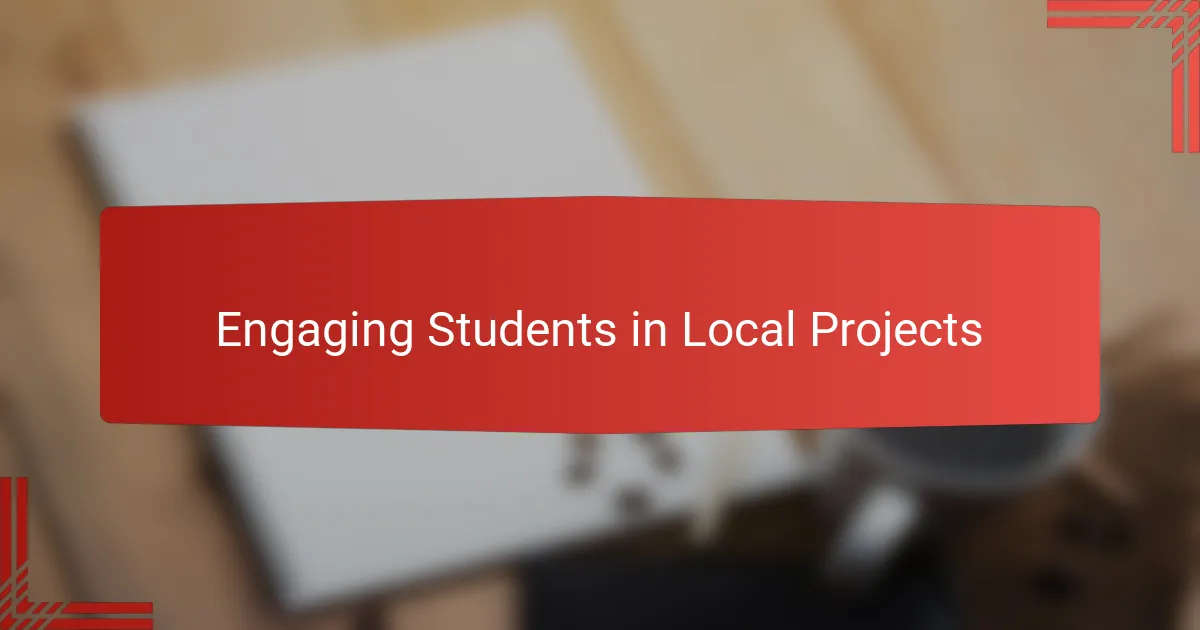
Engaging Students in Local Projects
One of the most rewarding ways I engage students in local environmental projects is by inviting them to take ownership. When kids plan a neighborhood cleanup or create posters about water conservation, I see their faces light up with pride. Have you ever noticed how much more a child cares about something when they’ve helped shape it?
I also like to connect these projects to places the students know well—a nearby park or their own schoolyard. That tangible connection turns abstract ideas into real responsibility. For instance, when a group of students helped plant native flowers in a local community garden, they didn’t just learn about ecosystems; they felt they were part of restoring a piece of their own neighborhood.
What strikes me most is how quickly these projects inspire conversations beyond the classroom. Students start talking with their families, neighbors, even city officials about what they’ve done and what still needs care. Isn’t that the kind of ripple effect every community hopes for? Engaging students this way feels like planting seeds for a greener San Diego that can grow for years.
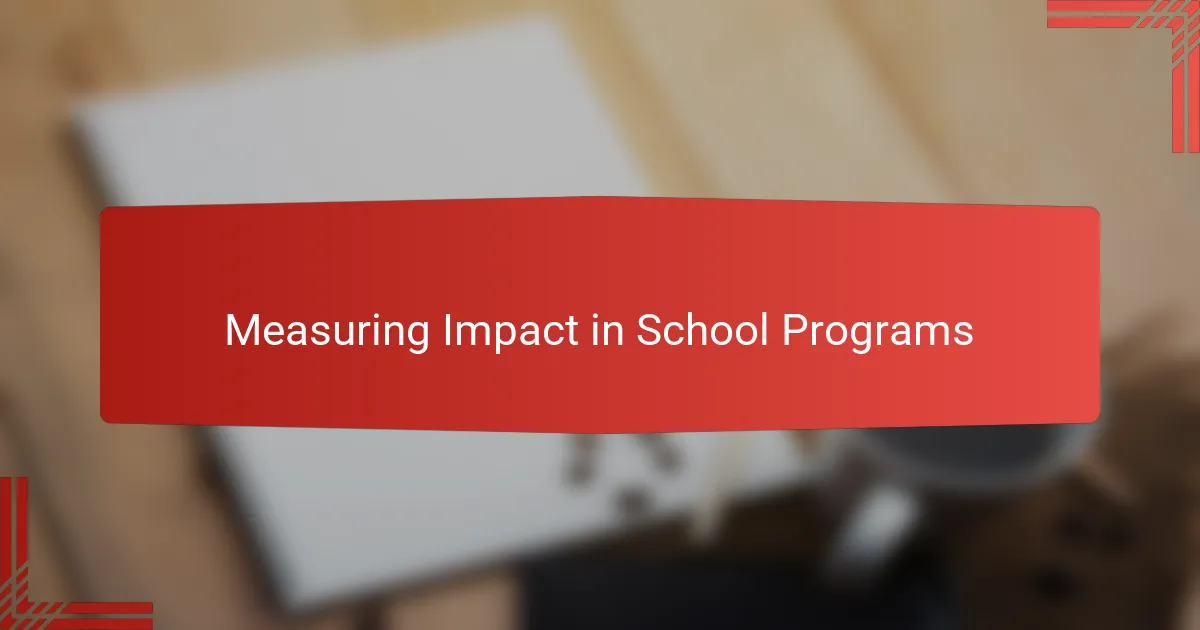
Measuring Impact in School Programs
Measuring impact in school programs can sometimes feel like trying to catch sunlight in your hands. From my experience, the key is to set clear, observable goals—like reducing waste in the cafeteria or increasing student participation in recycling drives—and then track progress over time. Have you ever seen a slow but steady change unfold, where weekly data charts or simple surveys reveal shifts in behavior and mindset? Those snapshots tell a powerful story.
I remember working with a school where we implemented a water conservation challenge. At first, it was just a fun activity, but by regularly checking with teachers and students, we noticed a real drop in water use and a growing excitement around the topic. Measuring impact isn’t just about numbers; it’s about capturing those moments when awareness turns into action and pride.
Sometimes, the most meaningful indicators aren’t on a spreadsheet at all. When students start leading their own projects or sharing environmental tips at home without prompting, that’s when I know the program’s impact has taken root. Isn’t that the kind of transformation we’re truly aiming for—where learning becomes living?